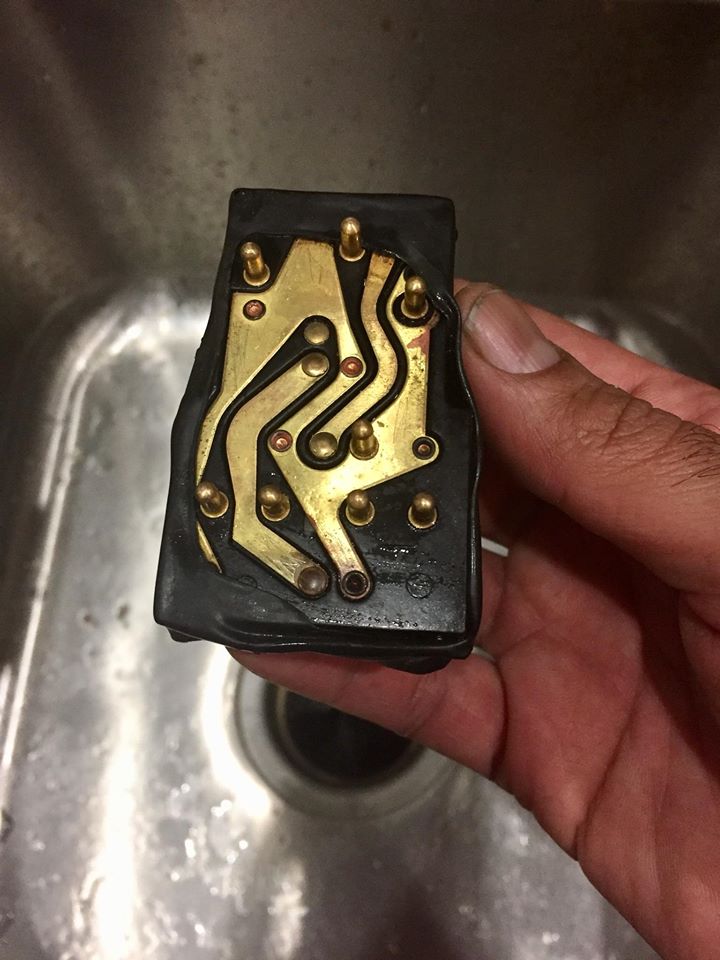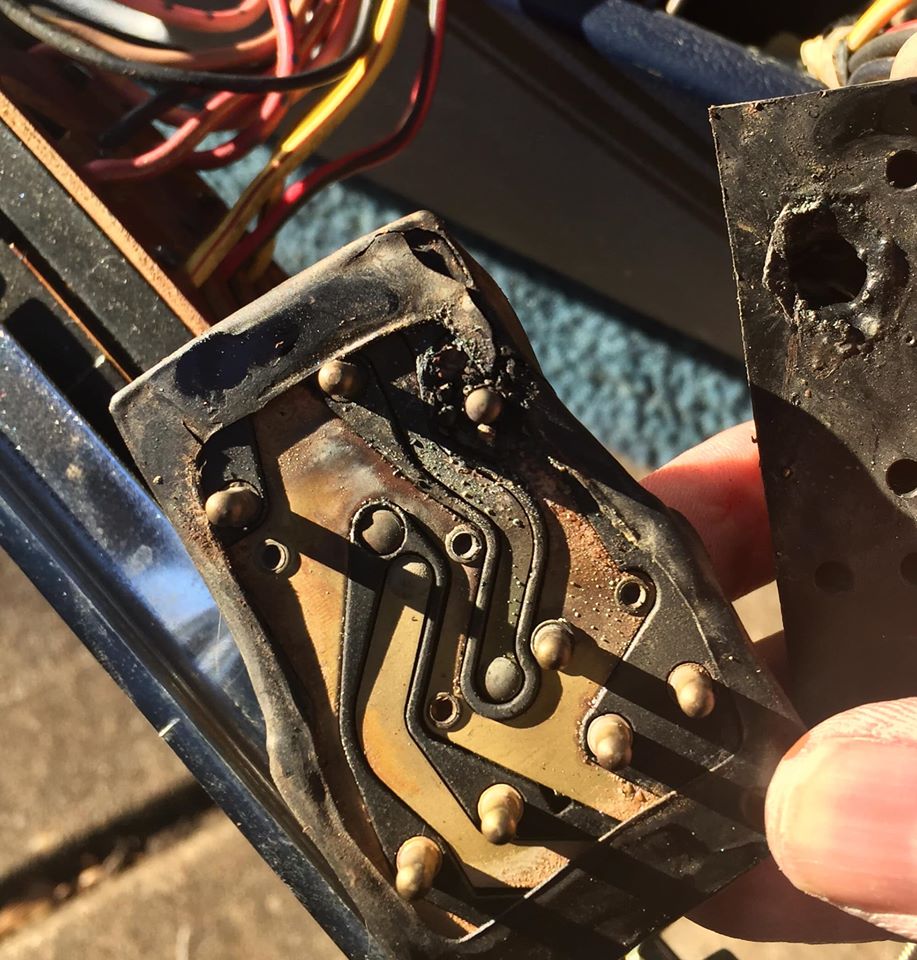Avoid disaster by cleaning quirky circuits
Here’s a shockingly obvious statement of fact: old cars have electrical quirks that worsen as the decades pass.
There’s nothing like the threat of an electrical fire to make any classic car enthusiast sound the alarm. Pictured above is a power seat switch from a 1979 Lincoln Continental Mark V. It is owned by an Lincoln & Continental Owners Club (LCOC) member who lives minutes away from me and has always lived a pampered, garaged, and well-maintained life.

But one day I got a call saying the power seat motor started clicking and wouldn’t stop. And guess what happens when this clicking isn’t addressed in a timely manner?
As a widely circulated image on Facebook shows, the switch catches on fire, melts the interior and turns the car into junkyard fodder before someone realizes what happened. Situations involving fires could be even worse … but let’s get back to solving the problem.

In this case, you can pirate a good working switch (from almost any 1972–89 Lincoln; 1980+ models are a better design) and clean it. Note how many fingers on the printed circuit board are heavily blackened over time. If not cleaned, this switch is also likely to fail.

There are several ways to clean exposed metal circuits: physical sanding/scraping (not recommended), using a pink eraser (they have more bite than others), or chemically cleaning via cotton swab.
The last is the best idea, especially if the circuit is peeling away from the printed sheet: I will never go back to using knives/erasers after using Flitz’s brass/copper cleaner. This stuff is toxic, though. Work in a well-ventilated area, wear gloves, apply with a cotton swab, and use a clean cotton swab to get the residue off the circuit.

The end result speaks for itself: since it took less than 20 minutes, saving this Lincoln from a potential interior fire was an honor, not an inconvenience.
If some part of your electrical system is acting up, inspect the wiring and clean the connections if needed! You will not regret it.



I have a 74 Lincoln Continental Mark IV. While driving, all of a sudden, the 4-way power seat button on the passenger door panel caught fire and there was a small flame coming out from around that button. There wasn’t anyone sitting in the passenger seat and the button was not being used. I’m totally perplexed what caused that power seat button to catch fire on its own out of the blue! I immediately pulled over, turned off the car and tried to blow it out with no effect. I had a water bottle and poured it on the door panel and it went out. My car ended up having no electrical power what so ever and had to be towed to my mechanic to attempt to find out why it happened. The other circuits in that door panel were ok, such as the power window buttons, and door lock button; it was just the power seat button. Anybody else have something like this happen?
This is commonplace and its why I cleaned the circuit on that Mark V!